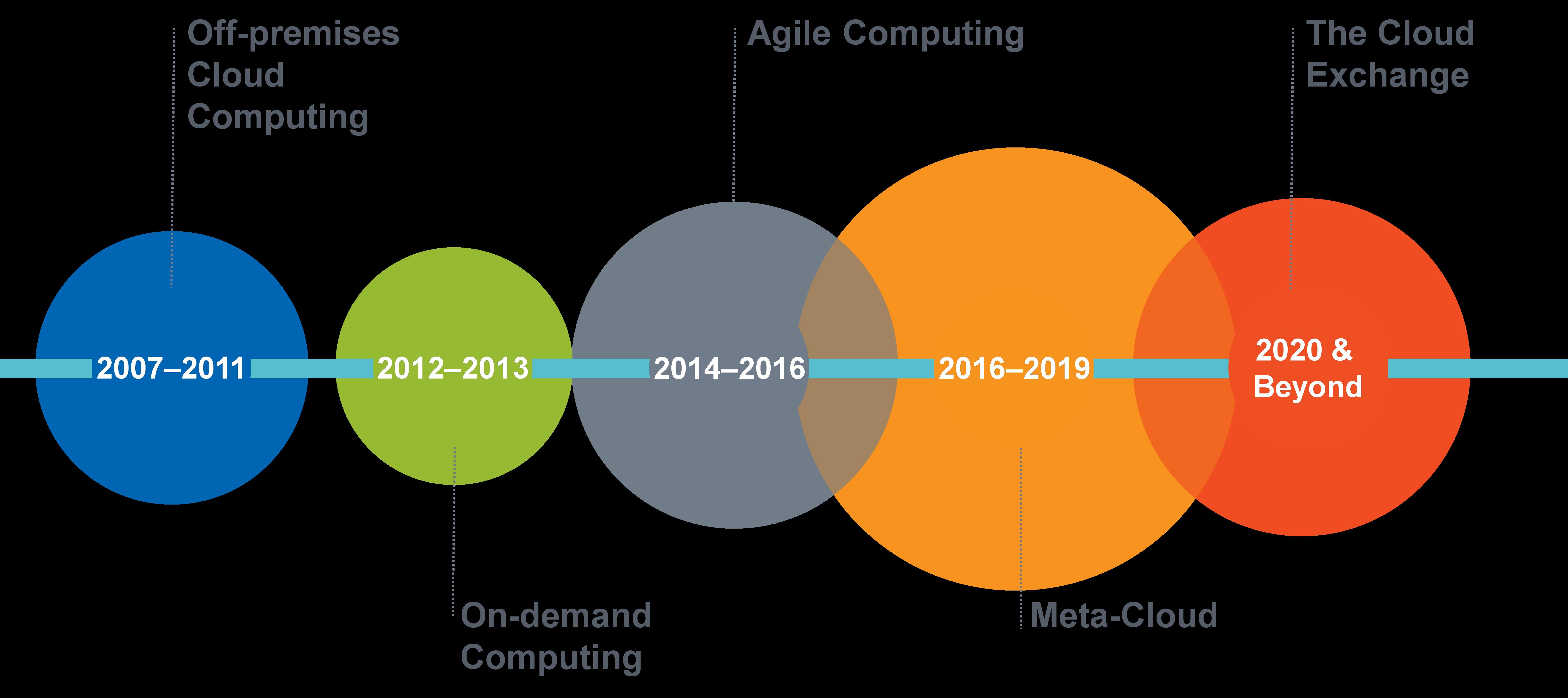Machine Learning and Meta-Clouds Next for Cloud Services
In 2014 and 2015, enterprises achieved an objective of cloud computing that had remained elusive: on-demand agile computing, allowing automatic overflow of workloads during peak demand periods from their own data centers to CSP-provided facilities.
From 2016 to 2019, the hybrid cloud architecture gives way to a distributed architecture, where enterprises consume services from multiple CSPs — called Meta-Clouds — driving additional cost and performance optimizations. We also expect to see the emergence of a wholesale market for cloud infrastructure.
Computing resources will become a commodity and will be traded on a commodity exchange after 2020. Many software and equipment vendors will switch business models, providing their offerings as off-premises cloud services, rather than following traditional software-licensing and hardware-driven models.
Exhibit 1: Meta-Clouds Coming to Off-premises Cloud Services
Enterprises Creating Custom Clouds
This year enterprises will continue to extend their off-premises cloud service usage across many clouds, creating Meta-Clouds, with enterprises consuming services from multiple cloud service providers, driving additional cost and performance optimizations. The use of multiple CSPs is already well established, as we learned in the IHS 2016 Cloud Services Strategies North American Enterprise Survey, where respondents indicated they will use an average of eight different CSPs by 2018. This result may seem surprising, but it is in line with a market containing many specialized players that can meet custom requirements of off-premises cloud services users, such as the following:
- Offer assurances that all operations (including company management) are local;
- Provide branded SaaS applications, such as SAP, Salesforce.com, and Office 365; and
- Offer various flavors of IaaS that specialize in virtualized or bare-metal servers with specific OS builds, as well as specialization in containers.
The Meta-Cloud spells opportunity, as consuming off-premises cloud services from many different CSPs will likely be a management nightmare for IT teams. There will be an opportunity for communication service providers, managed services providers, and cloud services brokers that can provide a single connection to an enterprise, including a service-level agreement (SLA) and a single point of management for the enterprise to access all the CSP-supplied cloud services it desires.
Meta-Clouds are already forming. Google recently announced new dashboard and orchestration tools that can manage and migrate workloads in Google’s own data centers, as well as Amazon, and on-premises data centers. NTT enhanced its enterprise cloud services with the ability to connect to third-party CSP data centers. Equinix competes on a global basis, offering IaaS (colocation) that can be bundled with direct network connectivity between an enterprise and more than 1,300 cloud and IT service providers that reside in Equinix data centers. And CenturyLink’s ElasticBox allows customers to create a self-serve catalog of applications and IT infrastructure across 12 different cloud providers — all orchestrated by CenturyLink.




















